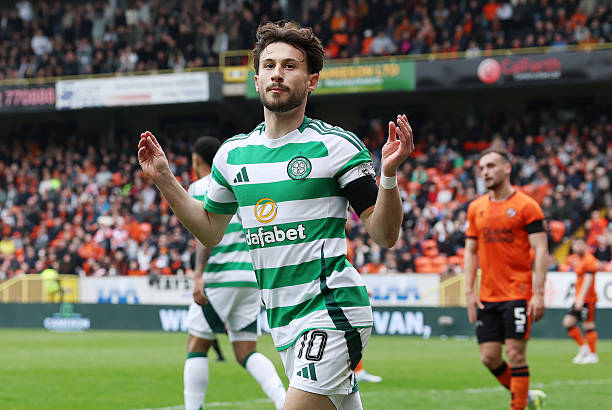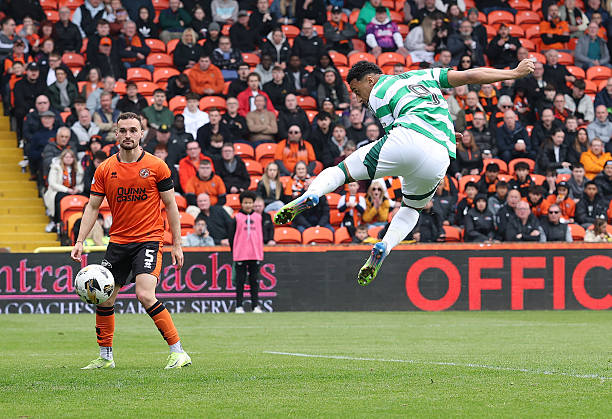
Celtic: How Stability and Strategy Built Their Unstoppable Dominance
Celtic fc, a name synonymous with success in Scottish football, has set the bar for dominance in the league, particularly over the past decade. While their success story is marked by on-field triumphs, the true engine behind their continuous victory lies in a combination of smart player trading, consistent managerial decisions, and a robust financial model. This article explores how The Bhoys has built a fortress around their domination, delving into the strategies that have enabled them to thrive both on and off the pitch.

The Turning Point: 2012 and Celtic’s First League Title in Four Years
The rise of The Bhoys modern-day dominance can be traced back to the pivotal 2012 season. After a 4-year drought without the league title, Neil Lennon’s The Bhoys side clinched the league trophy with a decisive 6-0 win over Kilmarnock at Rugby Park. At this moment, Rangers, their fierce city rivals, were reeling from their financial troubles and eventual administrative collapse. This created a power vacuum in Scottish football, which Celtic seized and built upon.
However, the Bhoys’ dominance cannot simply be attributed to the collapse of their rivals. The groundwork for their success had already been laid before 2012 through careful planning, strategic player recruitment, and consistency at the managerial level.
Stability in Management: A Core Pillar of Success
One of the key ingredients to Celtic Fc continued success is managerial stability. Since that landmark 2012 title, the club has only seen four managers take the helm: Neil Lennon, Ronny Deila, Brendan Rodgers, and Ange Postecoglou. The club’s ability to maintain managerial continuity, with all managers achieving an impressive win percentage, has helped foster consistency in performances.

Even during tough periods in European football, The Bhoys chose not to panic and allowed their managers to find their rhythm. Former Scotland winger and football pundit, Pat Nevin, praised the club’s patient approach, stating: “They’ve chosen good managers, stuck with them, and created a stable environment that helped them thrive.”
A Winning Formula: Player Trading Success
Celtic Fc success off the pitch is as important as their triumphs on it. Their financial model, centered around smart player trading, has been instrumental in their long-term dominance. The club’s strategy since 2004 has been to prioritize the signing of young talent under the age of 24. This player trading philosophy has allowed Celtic to invest in future stars, nurture their development, and sell them at a profit.

Over the past decade, Celtic’s player trading strategy has seen them spend approximately £213 million on players while earning around £260 million in player sales. Notable sales include Matt O’Riley to Brighton for £25 million, Jota to Al-Ittihad for £25 million, and Kieran Tierney to Arsenal for £23 million. These sales, combined with shrewd reinvestment, have kept the club financially stable while maintaining a competitive squad.
The European Factor: Champions League Success
Celtic Fc’s participation in the UEFA Champions League has also been a major contributor to their financial stability and growth. While their performances in Europe have been mixed, the financial rewards from regular Champions League appearances have been invaluable. The Bhoys have qualified for the group stage of the competition seven times in the past 14 seasons, generating significant income from both participation and broadcasting rights.
In 2023-2024, Celtic made over £30 million from their Champions League participation, a figure that dwarfs their domestic earnings. UEFA’s Giorgio Marchetti emphasized the importance of European competition for clubs like Celtic, noting, “The exposure, development opportunities, and increased fan engagement that come with Champions League participation cannot be overstated.”
Financial Prudence: Balancing Profits and Success

Financial discipline is another key pillar of Celtic’s sustained dominance. Unlike many European clubs, Celtic Fc has avoided racking up significant debts in pursuit of silverware. Instead, they have focused on operating within their means while still striving for success on the field.
The club’s latest figures show a turnover of £124.5 million, a staggering £40 million ahead of their closest rivals, Rangers. Over the past 14 years, Celtic has posted a combined profit of £112 million, a remarkable achievement in the competitive landscape of Scottish football. This financial stability allows the club to reinvest in their squad while also giving them the flexibility to make necessary adjustments when needed.
Boardroom Stability: A Quiet Revolution Behind Celtic’s Success

Celtic Fc boardroom has also played a significant role in the club’s ongoing dominance. Since 1999, the club has been under the control of Irish businessman Dermot Desmond, providing stability in an era where many other clubs have experienced ownership changes. This consistent leadership at the top has allowed Celtic to maintain a clear, long-term vision for their growth.
Geoff Brown, former chairman of St Johnstone, noted that the Celtic board has worked constructively for years, making decisions that have contributed to the club’s current status as one of the most financially secure and successful in Scottish football.
The Impact on Scottish Football
While Celtic’s dominance has been a source of pride for their supporters, it has also created a sense of predictability in the Scottish Premiership. Financial expert Kieran McGuire explained that the dominance of one club in a league can diminish its appeal to TV audiences and global markets, who crave unpredictability. “Celtic’s dominance makes it harder to sell the product internationally,” McGuire stated. “Football fans enjoy uncertainty, and when one team consistently wins, the excitement diminishes.”
SUGGESTED FOR YOU
Arsenal vs PSG: 7 Key Match Details, Team News, and Lineups for the UEFA Champions League Semifinal
Rangers’ Struggles and the Potential for Change

The biggest challenge to Celtic’s reign is, of course, their city rivals, Rangers. After falling into financial turmoil in 2012, Rangers have struggled to regain their former glory. However, with fresh investment and ongoing takeover talks, there is hope among their supporters that the balance of power in Scottish football could shift in the future.
For Rangers to compete with Celtic Fc, they must establish a stable financial model, invest in player development, and consistently qualify for European competitions. Only by following a similar blueprint to Celtic’s can Rangers hope to challenge their dominance.
Conclusion: The Road Ahead for Celtic Fc
Celtic’s remarkable success in Scottish football is a testament to their well-structured business model, managerial stability, and financial prudence. While the club faces challenges from rival teams, particularly Rangers, their dominance appears secure as long as they continue to follow the path that has served them so well in recent years. Footballing history teaches us that dominance is often temporary, but with the right foundations, Celtic’s reign could continue for years to come.









